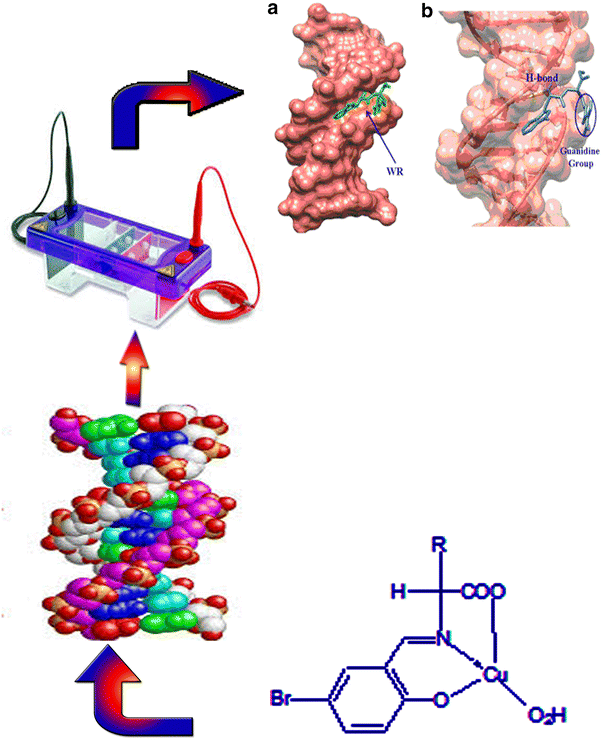Five novel Cu(II) complexes derived from the condensation between 5-bromosalicylaldehyde (bs) and α-amino acids (L-alanine, l-phenylalanine, L-aspartic acid, L-histidine and L-arginine) were synthesized and characterized by their elemental analyses, thermogravimetric analysis, IR, mass and electronic spectra, conductance and magnetic measurements. Moreover, the stoichiometry and the stability constants of the prepared complexes have been determined spectrophotometrically using continuous variation and molar ratio methods. The obtained results indicated that the Schiff bases of the amino acids: L-alanine, L-phenylalanine, L-histidine and L-arginine behave as tridentate ligands. The ligands are coordinating with the Cu(II) via azomethine nitrogen, deprotonated carboxylate oxygen and phenolic oxygen. However, in the case of L-aspartic, the ligand acts as tetradentate due to the coordination of the second carboxylate group. Based on the studies of magnetic moments and electronic spectra, a square planar geometry has been proposed for all Cu(II) complexes except bromsalicylaldehydine aspartate complex which has a distorted tetrahedral structure. The representative Schiff bases and their Cu(II) complexes were tested in vitro for their antibacterial activity against two Gram-positive bacteria (Micrococcus luteus and Bacillus cereus) and one Gram-negative bacteria (Pseudomonas aeruginosa). All the complexes showed activity against the organisms more than the free Schiff base ligands and the activity increases with the increase in concentration of test solution containing the new complexes. Moreover, the interaction of the prepared Schiff base amino acid Cu(II) complexes with calf thymus DNA has been investigated by absorption spectra, viscosity and gel electrophoresis measurement and the mode of CT-DNA binding to the complexes has been explored. The investigated complexes exhibit cooperative binding and presumably intercalate into DNA and follow the trend: bsarc>bshc>bsalc>bsphalc>bsasc.


